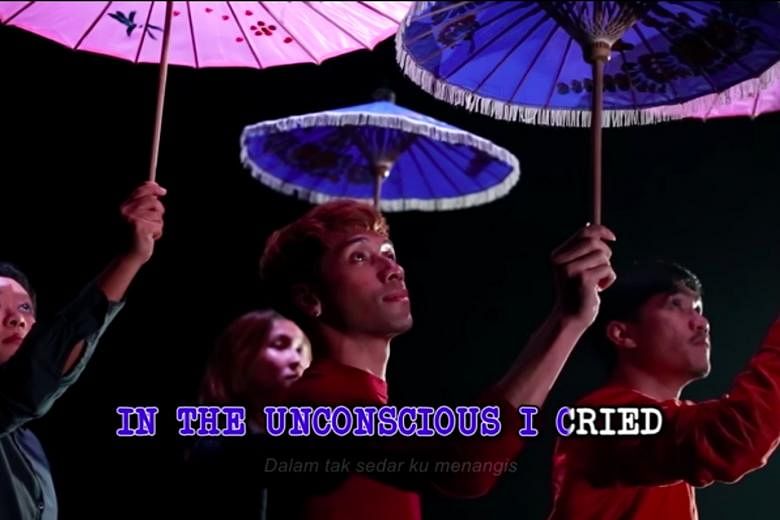JIWANG
P7:1SMA
Online
Aug 29
Jiwang is Malay slang for excessive romantic, anguish and heartbreaking love and also refers to a period in the 1980s to1990s when the genre of Malay language slow rock music catapulted to popularity in Singapore, Malaysia and Indonesia.
In this karaoke dance film, viewers were greeted first by Norhaizad Adam, who is also the director, performing to a slow-rock classic, Siapa Di Hatimu (Who Is In Your Heart) by the band Ekamatra.
With his shades on, he moved sporadically to the song, at times embodying the cliched mannerisms of love-lorn singers.
He set the tone for the next three solos performed by Syimah Sabtu, Koh Xiao Jun and Sharul Mohd, whose interpretations of different Jiwang songs through movements and the use of props conjured up experiences that reflected the varying moods and characteristics of the genre.
I was most intrigued by two elements of the work which, although disconcerting, were quite clever.
The first was the incorporation of karaoke aesthetics. From the atypical lyrics on screen that changed colour concurrently as the words were sung to the scrolling of song titles during interludes and the awkward video edits, these characteristics of mediocre karaoke videos added to the viewing experience.
The aesthetics at times took viewers away from the dancing performer, but an interactive feature introduced later made for a welcome disruption to the hypnotism.
Mid-way through the duet, viewers had to choose which of the two performers should leave the space.
Best experienced when one belts out the songs, Jiwang was an innovative attempt to make sense of the gradual artistic migration to digital and tap the recent past to reflect the uncertainties of the present.

